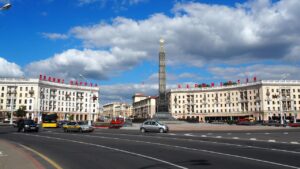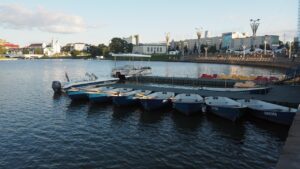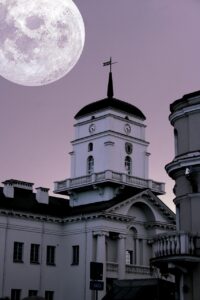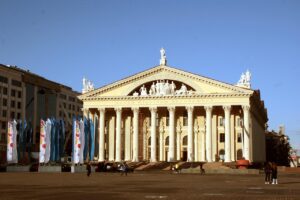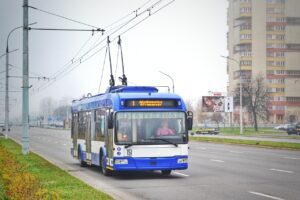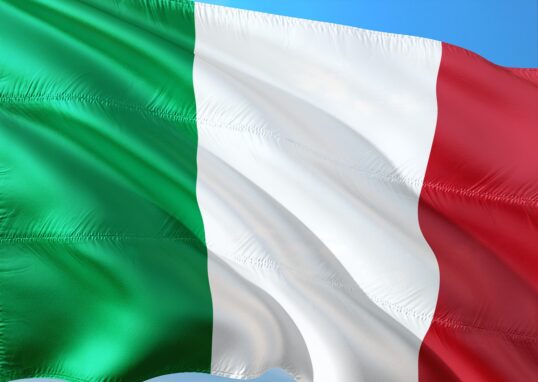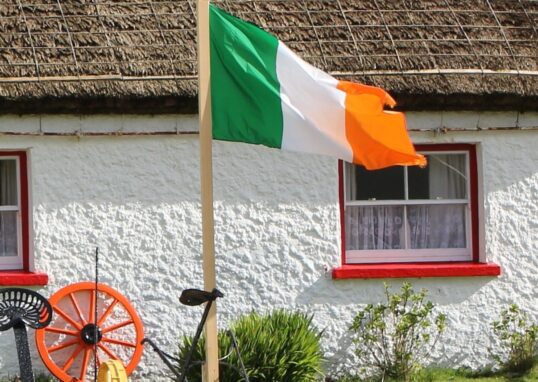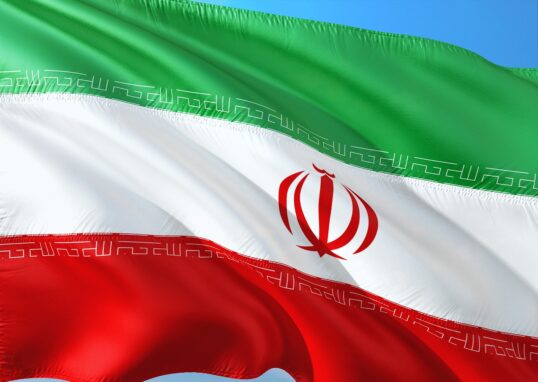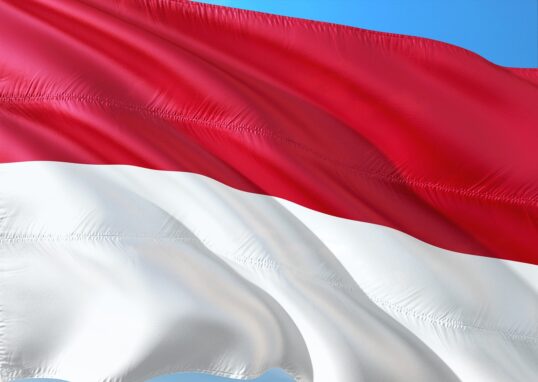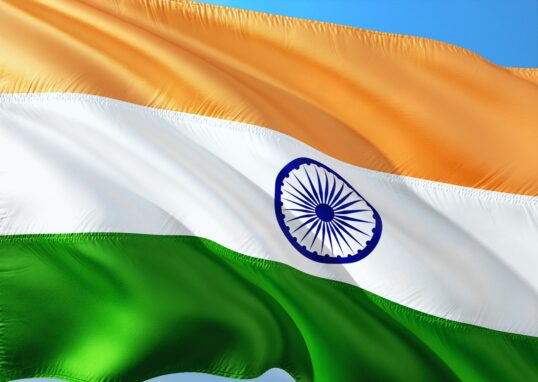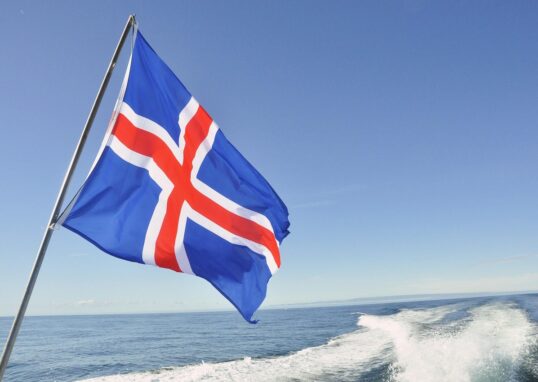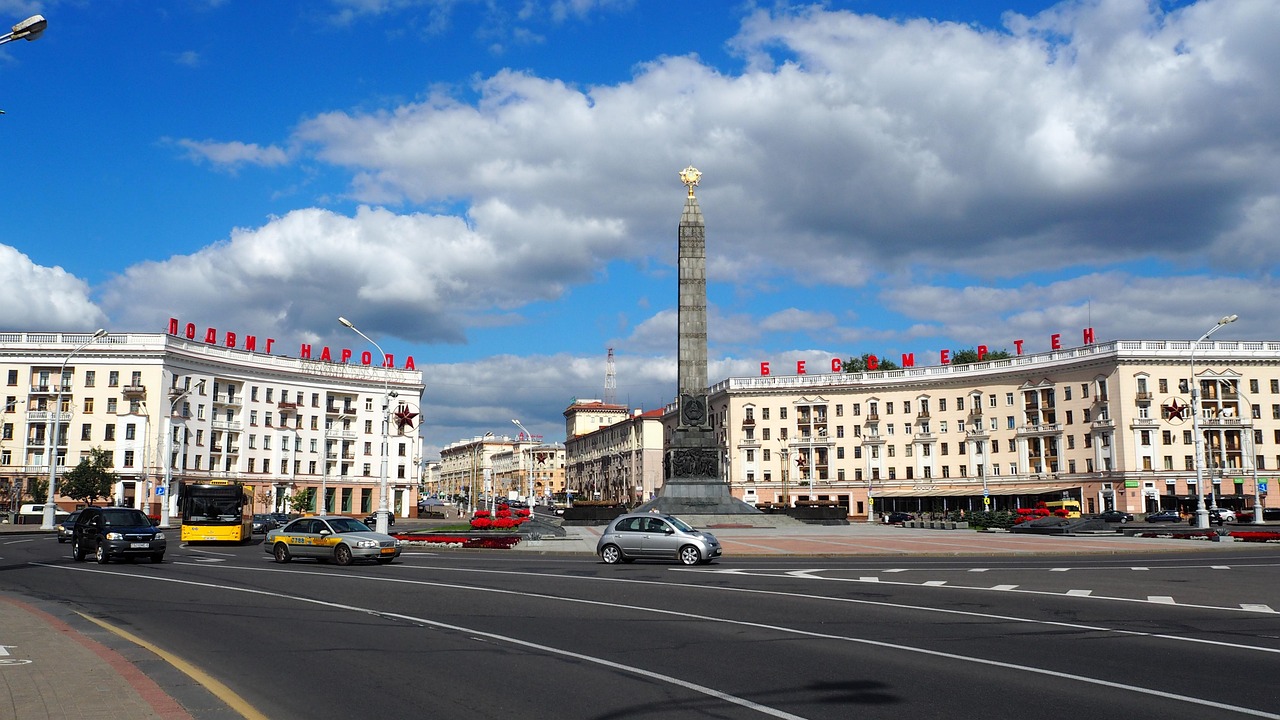
Belarus – The Land of Nature, History, and Culture
Belarus is a beautiful country in Eastern Europe. It’s a land of wide forests, clean rivers, silent lakes, and cozy villages. The country has an interesting history, profound traditions, and friendly people. It is surrounded by Russia, Ukraine, Poland, Lithuania, and Latvia. Because of its location in the center of Europe, it is a bridge between East and West. The capital of Belarus is Minsk, a modern, vibrant city. Belarus is famous for its clean environment, friendly inhabitants, and well-preserved nature. It has over 40% of its territory covered in forests, ranking as one of the greenest countries in Europe. In this article, we will explore Belarus in detail. We will learn about its history, geography, culture, inhabitants, points of interest, and surrounding places.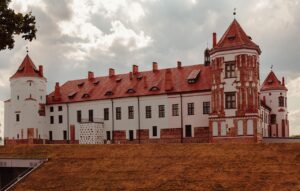
Geography and Climate
Belarus is a landlocked country. It doesn’t have any sea or ocean coast. However, it is full of rivers and lakes. It contains more than 10,000 lakes and about 20,000 rivers in Belarus. The largest river is the Dnieper, which flows through the southern part of the country. The largest lake is Lake Narach, which is also an excellent vacation spot. The climate in Belarus is continental. Winters are snowy and cold, and summers are warm and green. The winter temperature is around -4°C on average, and +18°C to +25°C in the summer. Autumn and spring are mild and colorful. The land is mostly flat with rolling hills and plains. The highest hill is Dzyarzhynskaya Hill, which is 345 meters above sea level. The countryside is one of the country’s finest assets.
History of Belarus
Belarus has a long and fascinating history. Human beings have lived here since ancient times. During the Middle Ages, the land was part of the Kievan Rus, an early Slavic state. Later, it was part of the Grand Duchy of Lithuania. In the 16th century, Belarus merged with Poland as the Polish-Lithuanian Commonwealth. But in the late 18th century, Russia took control of Belarus after the Partitions of Poland. Belarus remained under Russian rule for more than a century. In 1918, after World War I, Belarus became an independent state as the Belarusian People’s Republic, but only briefly. It was soon incorporated into the Soviet Union as the Byelorussian SSR. During World War II, Belarus suffered severely. The majority of the cities were destroyed, and millions of lives were lost. After the war, Belarus rebuilt itself and developed into an industrial center of the Soviet Union. Finally, in 1991, Belarus became independent with the breakup of the Soviet Union. It has since developed its own identity, still keeping its culture and traditions intact.
People and Culture
The people of Belarus are warm and welcoming. Most Belarusians are ethnic Slavs. Belarusian and Russian are the official languages, and both are spoken with fluency by many. Belarusian culture is bound up with traditions and nature. Folk songs, dancing, embroidery, and celebrations are very popular. The majority of families still celebrate such old-fashioned holidays as Kupala Night, which is a summer solstice celebration with singing and fires. Religion plays an important role in Belarusian life. Eastern Orthodox Church is the most widespread religion, followed by Roman Catholicism. It is possible to admire wonderful churches and monasteries in every region. Belarusian cuisine is simple but appetizing. The national dish is draniki, potato pancakes. Borscht (beet soup), machanka (pork stew), and kolduny (dumplings) are also widely used. Bread, potatoes, mushrooms, and dairy products are found in every home.
Economy and Development
Belarus features a mixed economy. It is a combination of state ownership and private enterprise. Machinery, chemicals, food processing, textiles, and electronics are the main industries. The capital city, Minsk, is the economic hub. It is home to many companies, factories, and IT startups. The country is also famous for being an environmentally clean country with great dairy products. Agriculture continues to play a role. Belarus produces grain, potatoes, milk, meat, and sugar beets. It sells products to neighboring countries like Russia, Ukraine, and Poland. Belarus, in recent times, has focused on modern technology and digital industries. Minsk High-Tech Park is one of the leading innovation hubs in Eastern Europe.
Major Cities in Belarus
Minsk
Minsk is the capital and largest city of Belarus. It is modern, green, and lively. The city is full of wide streets, parks, and Soviet-style architecture. Visitors can go to the Independence Square, Victory Square, and National Library of Belarus, which looks like a giant diamond. The Belarusian State Museum of the Great Patriotic War is a historical must-visit. Nightlife in Minsk is vibrant with plenty of cafes, restaurants, and theatres. Public transport is clean and well organized with an easy-to-use metro system.
Brest
Brest is situated in southwestern Belarus, near the border with Poland. It is renowned for the Brest Hero-Fortress, a WWII memorial. The fortress honors the valor of Belarusian soldiers. Close to Brest is the Belovezhskaya Pushcha National Park, one of the ancient European forests. It is home to the European bison, a rare and protected creature.
Grodno
Grodno is located in the west of Belarus. It is one of the most scenic cities in the country. Grodno has plenty of churches, castles, and old buildings that tell a lot about its past. The New Castle and Old Castle are places you must visit. You can also walk along the old town’s narrow streets and enjoy the riverside.
Vitebsk
Vitebsk is known as the cultural capital of Belarus. It is the hometown of the famous artist Marc Chagall. The Marc Chagall Museum is a wonderful point of interest for art lovers. Vitebsk hosts the Slavianski Bazaar, a large international music and arts festival that welcomes artists from all over Europe, each summer.
Gomel
Gomel is the second-largest city in Belarus. It lies near the Dnieper River and is full of green parks and cultural sites. The Gomel Palace and Park Ensemble is a beautiful historic ensemble with gardens, fountains, and museums.
Mogilev
Mogilev is an industrial and cultural city in eastern Belarus. It is renowned for the St. Nicholas Monastery and the Mogilev City Hall Tower, which offers great views
🏰 Tourist Attractions in Belarus
Belarus is full of surprises. It is peaceful, green, and full of history. Each region of the country has a tale to share about courage, culture, and beauty. From castles and museums to national parks and lakes, there are numerous excellent sites for tourists to visit in Belarus. The most famous tourist spots in Belarus are the following, each giving a different glimpse into the heart of the country.
Mir Castle Complex
Mir Castle is one of the most familiar landmarks in Belarus. It’s located in the town of Mir, about 90 kilometers southwest of Minsk. The formidable fortress is a UNESCO World Heritage Site and a point of Belarusian pride. The castle was built in the 16th century in a mix of Gothic, Baroque, and Renaissance architectural styles. It is a fairytale-like place with high towers, red-brick walls, and a serene atmosphere. One can walk through the halls, go to the museum, and learn more about aristocratic families that lived there.
Externally, the castle stands beside a peaceful lake and lush gardens, perfect for strolls and photography. Mir Castle is a fairytale come true for most visitors.
Nesvizh Castle
Another treasure of Belarus, Nesvizh Castle, is only 30 kilometers away from Mir Castle. It is also a UNESCO World Heritage Site and once belonged to the powerful Radziwiłł family. Nesvizh Castle is encircled by a lake, gardens, and walking paths. Within the castle, royal apartments, fine furniture, paintings, and tapestries can be viewed. The castle also contains a tiny chapel with exquisite artwork. The surrounding park is roomy and serene. In spring and summer, it’s a perfect place to have a picnic or lovers’ walk. Together with Mir Castle, Nesvizh Castle forms the “Golden Heritage” of Belarusian architecture.
Brest Hero-Fortress
The Brest Fortress is among the most important historical sites in Belarus. It is located in Brest, near the border with Poland. The fortress is synonymous with heroism during World War II when it was defended by Soviet soldiers against the Nazi military in 1941. Today, it is a memorial complex. It is centered by a gigantic soldier’s head sculpture, which represents courage and sacrifice. The museum inside tells the story of the war and of those who sacrificed their lives for freedom. The fortress is surrounded by a river and vegetation, making it a historical but peaceful site. Every visitor who comes here leaves inspired by the bravery of the Belarusian people.
Belovezhskaya Pushcha National Park
It is one of the oldest and most famous national parks in Europe. It is situated on the border between Belarus and Poland and is a UNESCO World Heritage Site. Belovezhskaya Pushcha is a natural wonder. The park is home to the European bison, the largest terrestrial animal in the continent. The park is full of ancient oak trees, some over 600 years old. Visitors can walk and cycle along paths, visit the small museum, and even see “Father Frost,” the Slavic equivalent of Santa Claus, who lives in a wooden forest house.
Minsk – The Capital City
Minsk is the capital and cultural hub of Belarus. It is a clean, modern, and lively city. Some of the top-rated attractions in Minsk include:
- Independence Square – one of the largest squares in Europe, with great buildings and fountains.
- Victory Square – with a tall monument to World War II soldiers.
- National Library of Belarus – diamond-shaped and providing panoramic views from the top.
- Belarusian State Museum of the Great Patriotic War – among the finest war museums in Europe.
Minsk also has numerous theaters, parks, cafes, and galleries. One can take walks along the Svislach River, ride the clean metro, and enjoy the active nightlife.
Polotsk – The Oldest City in Belarus
The most ancient city in Belarus is Polotsk, which was mentioned for the first time in the 9th century. It is located in the north of the country on the Western Dvina river. The city is renowned for its ancient churches and peaceful atmosphere. The main attraction is the St. Sophia Cathedral. It was built in the 11th century and is regarded as a masterpiece of early East European architecture. In the cathedral, there are frescoes and a large organ to be found. Polotsk is also home to museums of Belarusian culture, printing, and the great writer Francysk Skaryna. It feels as if one is going back in time while strolling along its peaceful streets.
Vitebsk – City of Art and Culture
Vitebsk is referred to as the cultural capital of Belarus. It is the birthplace of the internationally famous artist Marc Chagall. The Marc Chagall Museum depicts his life, art, and love for the city. Every July, Vitebsk hosts the Slavianski Bazaar, a huge international music and arts festival. Artists from many countries come, and it is one of the liveliest events in Eastern Europe. Visitors can also see the Assumption Cathedral, old bridges over the Dvina River, and cozy cafes that add to the city’s charm.
Braslaw Lakes National Park
In northern Belarus lies Braslaw Lakes National Park, one of Belarus’ most stunning natural attractions. The park covers over 300 lakes among hills, woods, and meadows. It is a great spot for boating, fishing, swimming, and camping. Visitors can rent kayaks or take boat tours of the calm waters. The air is fresh, and the landscape is peaceful. Nature enthusiasts can view deer, foxes, and various birds. It’s an ideal location for individuals who need to relax and become part of untouched nature.
Khatyn Memorial Complex
The Khatyn Memorial is one of the most moving sites in Belarus, a memorial to a small village that the Nazis burned down during World War II. The village was set on fire, and almost all of its residents were killed. The site is now a memorial and a peaceful place. Visitors can see symbolic chimneys for each of the burnt-down homes and hear the sound of a ringing bell every 30 seconds, symbolizing eternal mourning.
Dudutki Museum of Folk Crafts
If you’re interested in learning about traditional Belarusian life, then the Dudutki Museum on the outskirts of Minsk is perfect. It’s an open-air museum that shows you how people lived centuries ago. You can see traditional homes, blacksmith shops, and pottery workshops. You can taste homemade bread, cheese, and honey. You can even take a horse ride or have your photo taken in traditional clothes.
Gomel Palace and Park Ensemble
IIn the southern city of Gomel lies this palace ensemble, a fine specimen of 18th-century architecture. The palace was built for the Rumyantsev and Paskevich families and is set amidst gardens and fountains.
Lake Narach
Lake Narach is the largest lake in Belarus. It is often called “the blue pearl” of Belarus. The lake is surrounded by forests and resorts and is loved by nature enthusiasts.
Festivals and Events
Belarus has several festivals that are celebrated throughout the year.
- Kupala Night – A midsummer night of dancing and bonfires.
- Maslenitsa – A pre-Lenten carnival with folk shows and pancakes.
- Independence Day – July 3 is celebrated with parades and fireworks.
- Slavianski Bazaar – A world-famous art festival in Vitebsk.
Transportation and Travel
Belarus has a very well-developed system of transport. The country is connected by modern roads, railways, and airports. Travel between cities is convenient by train, bus, or car. The Minsk Metro is one of Europe’s cleanest and most efficient metro systems. It is convenient for international tourists to get around since signs and announcements are made in both the Belarusian language and English.
Education and Society
Belarus puts a strong emphasis on education. The literacy rate is almost 100%. It has several universities, including Belarusian State University and Belarusian National Technical University. The healthcare system is inexpensive and available to everyone. Free medical care and social welfare are assured by the government to its citizens. Belarusian culture is peaceful and family-centered. People enjoy spending their time in the outdoors, especially in parks and lakes.
Surrounding Places Near Belarus
Belarus is surrounded by several beautiful nations, each of which has its own areas of interest.
Poland
Poland lies to the west of Belarus. It is convenient for travelers to travel to Warsaw or Krakow to see medieval castles, cathedrals, and museums. Poland shares many cultural similarities with Belarus, especially in the border town of Brest.
Lithuania
To the northwest, Lithuania is full of Baltic charm. Its capital, Vilnius, is renowned for Baroque architecture and its old town. Vilnius is just a few hours from Belarus by train or car.
Latvia
To the north lies Latvia, whose capital Riga is renowned for Art Nouveau architecture and its medieval old town. Vitebsk’s closeness to Riga makes it an easy cross-border excursion.
Ukraine
To the south, Ukraine is a country with a rich history and culture. Its capital city, Kyiv, is famous for monasteries and golden domes. Ukraine is a destination for numerous Belarusians for tourism and trade.
Russia
To the east, Russia is Belarus’s biggest neighbor and its most important ally. Smolensk and Moscow are easily accessible from Minsk. Russia and Belarus share close cultural, linguistic, and historical ties.
Modern Developments and Updates
In recent years, Belarus has been concentrating on the modernization of the economy and the development of tourism. New hotels, parks, and transportation systems have been constructed. The nation is also developing digital services and e-visa systems to invite tourists. Protection of the environment has become a priority. Belarus has initiated various projects for the conservation of its forests and lakes. Also, Belarus continues to develop its IT industry. The High-Tech Park in Minsk has given rise to many international tech companies and startups.
Conclusion
Belarus is a tranquil, picturesque, and traditional country. It has the charm of the old and the amenities of the new. From forests and lakes to old castles and new cities, Belarus is a new experience for each traveler. It’s a country that is concerned about nature, tradition, and family. Wherever you go into the remote villages or the capital city, which is full of life, there is warmth and hospitality everywhere. Belarus may be lesser known than its neighbors, but after visiting, its beauty will stay in your heart forever.
